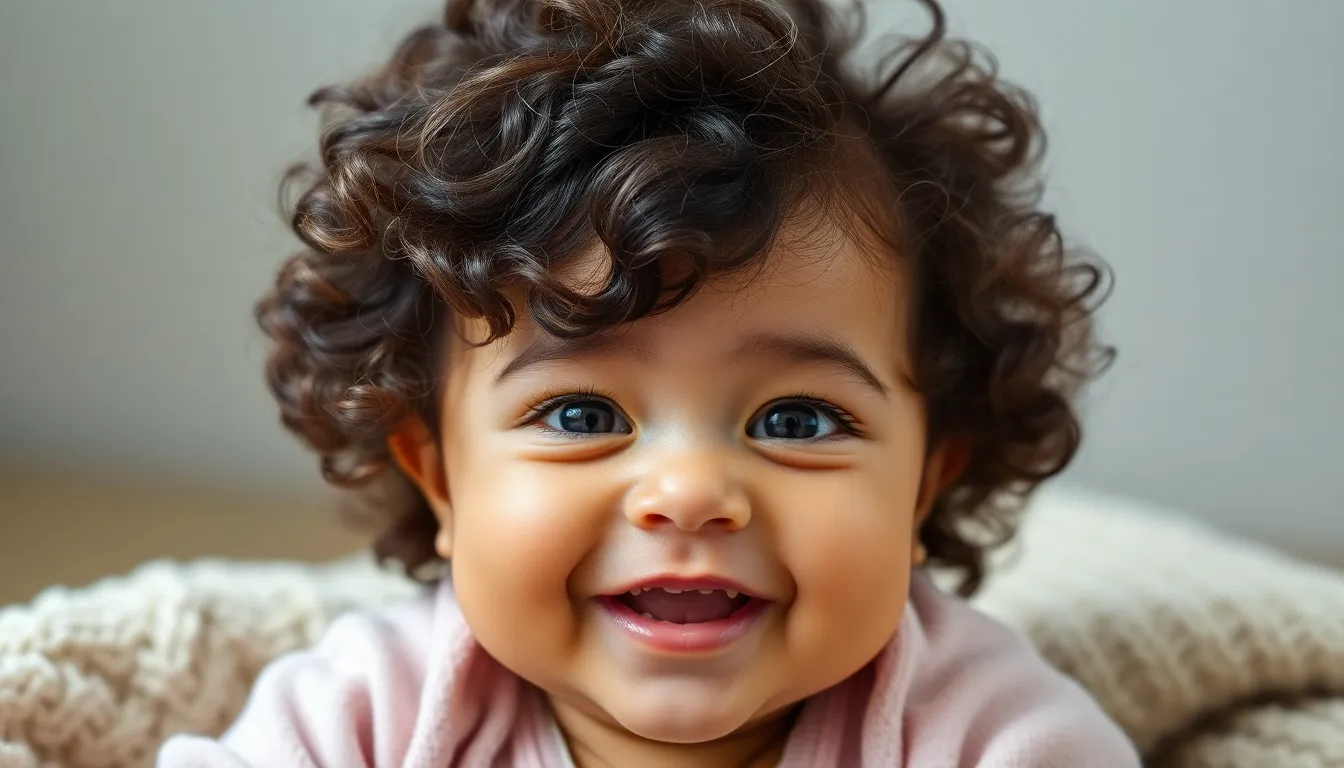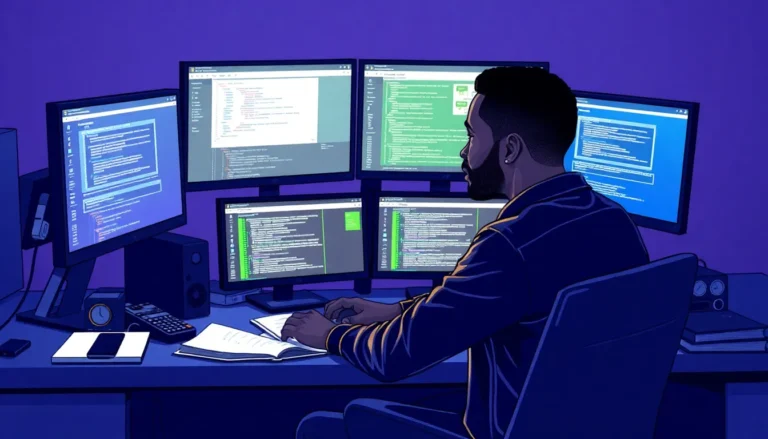Table of Contents
ToggleEvery new parent knows the joy of cradling their little bundle of joy, but what happens when that adorable fuzz on their head starts to disappear? It’s a mystery that can leave even the most seasoned caregivers scratching their own heads—pun intended! While it might seem alarming to see those tiny tufts vanish, it’s all part of the baby hair drama that unfolds in those early months.
Typically, babies start losing their hair around the age of three to six months, and the reasons can range from natural hair cycles to the infamous “baby bald spot” caused by all that time spent lying down. So before panicking and planning a tiny hair salon visit, let’s dive into the fascinating world of baby hair loss and uncover the truth behind this adorable rite of passage.
Overview of Baby Hair Loss
Baby hair loss is a common experience that often surprises new parents. Typically, this phenomenon occurs between three to six months of age. It relates directly to the natural hair growth cycle, where a baby’s initial hair falls out to make way for new, permanent hair.
Certain factors can contribute to this type of hair loss. Friction from lying on surfaces may cause the development of bald spots on the back of a baby’s head. Other underlying health conditions, though less common, can also lead to hair loss.
Understanding the timeframe helps ease parental concerns. A noticeable decline in hair volume may take place at various points throughout a child’s first year. Hair usually begins to grow back several months after initial loss.
Reassurance comes from knowing that hair loss during this stage is quite typical. Parents often observe thick, healthy locks replacing the baby’s first hair. This transition signifies normal development and is ultimately part of growing up.
Parents can support healthy hair growth through gentle care. Regularly massaging the scalp can stimulate follicles. Maintaining a balanced diet and ensuring proper hygiene also contributes to hair growth.
Seeking professional advice may be necessary for persistent hair loss. Consulting a pediatrician offers peace of mind and guidance. Often, parents find that understanding the reasons behind hair loss brings comfort during this transitional phase.
Understanding Baby Hair Growth

Hair growth in babies involves specific stages, each contributing to their overall development. Typically, newborns have fine, soft hair known as lanugo, which usually sheds within a few weeks after birth. By three to six months, many infants experience hair loss due to natural hair cycles. This loss often leads to the development of noticeable bald spots, especially at the back of the head. New hair begins to replace the lost strands as the baby approaches their first birthday, suggesting that this transition is both normal and expected.
Hair growth can be influenced by several factors. Genetics plays a key role, determining the texture and thickness of hair. Diet significantly impacts hair quality; providing a balanced mix of vitamins and minerals supports healthy growth. Additionally, environmental factors such as friction from sleeping surfaces may contribute to temporary bald spots. While underlying health issues might occasionally affect hair growth, they remain rare. This understanding helps reassure parents navigating the phases of their baby’s hair development.
Common Reasons for Hair Loss in Babies
Understanding the reasons behind hair loss can reassure parents. This natural part of development often occurs within certain stages.
Natural Hair Shedding
Natural hair shedding affects most babies. Lanugo, a fine soft hair, typically falls out around birth, making way for permanent strands. This phase usually occurs between three to six months. As hair follicles transition, loss seems normal. Expect regrowth in several months, which often results in thicker hair. Awareness of this cycle helps ease parental concerns.
Health Conditions
While rare, some health conditions may contribute to hair loss in babies. Conditions like alopecia areata can cause patchy baldness. Infections such as ringworm also lead to noticeable hair loss. Nutritional deficiencies, particularly in iron and protein, affect hair growth negatively. Monitoring a baby’s health and observing any hair loss patterns is important. Consulting a pediatrician provides clarity and guidance on potential concerns.
Environmental Factors
Environmental factors can influence hair loss as well. Friction from lying on surfaces creates bald spots on the back of the head. Excessive heat or humidity often exacerbates hair loss or slows regrowth. Additionally, harsh shampoos or chemicals can damage delicate hair and scalp. Parents should prioritize gentle hair care and avoid products loaded with irritants. Creating a supportive environment contributes significantly to healthy hair growth.
When Do Babies Lose Their Hair?
Baby hair loss often confuses new parents. Typically, this hair loss occurs between three to six months of age.
Typical Timeline
Shedding usually begins around three months as babies transition from lanugo to permanent hair. By six months, many infants exhibit signs of hair thinning. Growth of new hair typically starts within a few months after the initial loss. As babies approach their first birthday, thicker strands replace what fell out. This progression signals a normal hair development cycle that parents can expect.
Signs of Hair Loss
Parents may notice signs of hair loss in various forms. Bald spots often appear on the back or sides of the head due to friction from lying down. Soft, fine hair may thin out before more resilient strands come in. Observing increased shedding during routine activities like bathing or brushing can also indicate hair loss. While concerns may arise, most hair loss remains a natural phase of development.
Tips for Parents
Navigating baby hair loss can be daunting for new parents. Understanding how to care for a baby’s hair and knowing when to consult a doctor can ease concern and promote healthy growth.
Caring for Baby’s Hair
Gentle care is essential for a baby’s delicate hair and scalp. Parents should use mild, tear-free shampoos to keep the hair clean without causing irritation. Scalp massages with fingertips can stimulate hair follicles and improve circulation, promoting growth. Regular brushing with a soft-bristle brush helps distribute natural oils and keeps hair manageable. Avoiding tight hairstyles prevents unnecessary tension and breakage. Regularly washing hair two to three times a week maintains hygiene without drying out the scalp.
When to Consult a Doctor
Parents should observe their baby’s hair growth closely. Consulting a doctor may be necessary if significant hair loss persists beyond the typical age range. A pediatrician can evaluate whether any underlying health conditions, such as alopecia areata, contribute to hair loss. If a baby’s scalp appears irritated, shows signs of infection, or develops patches of hair loss, medical advice is crucial. Timely consultations can ensure proper diagnosis and treatment, reassuring parents about their child’s well-being.
Baby hair loss is a natural phase in early development that many parents experience. Understanding that this shedding is part of a normal hair cycle can ease concerns. As babies transition from fine lanugo to thicker hair, parents can support healthy growth with gentle care and proper hygiene.
Monitoring hair loss and consulting a pediatrician for any unusual signs ensures peace of mind. Embracing this transitional stage allows parents to appreciate their baby’s growth journey while fostering a healthy environment for new hair to flourish. With patience and care, thicker and healthier hair will soon replace what was lost.








